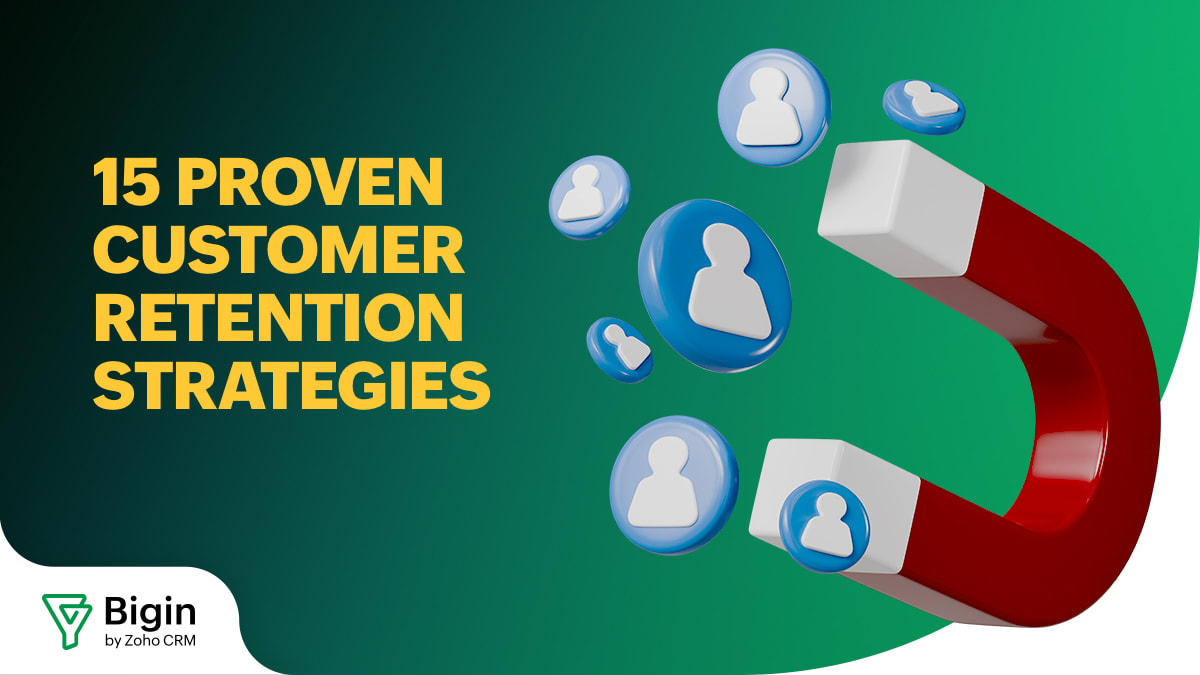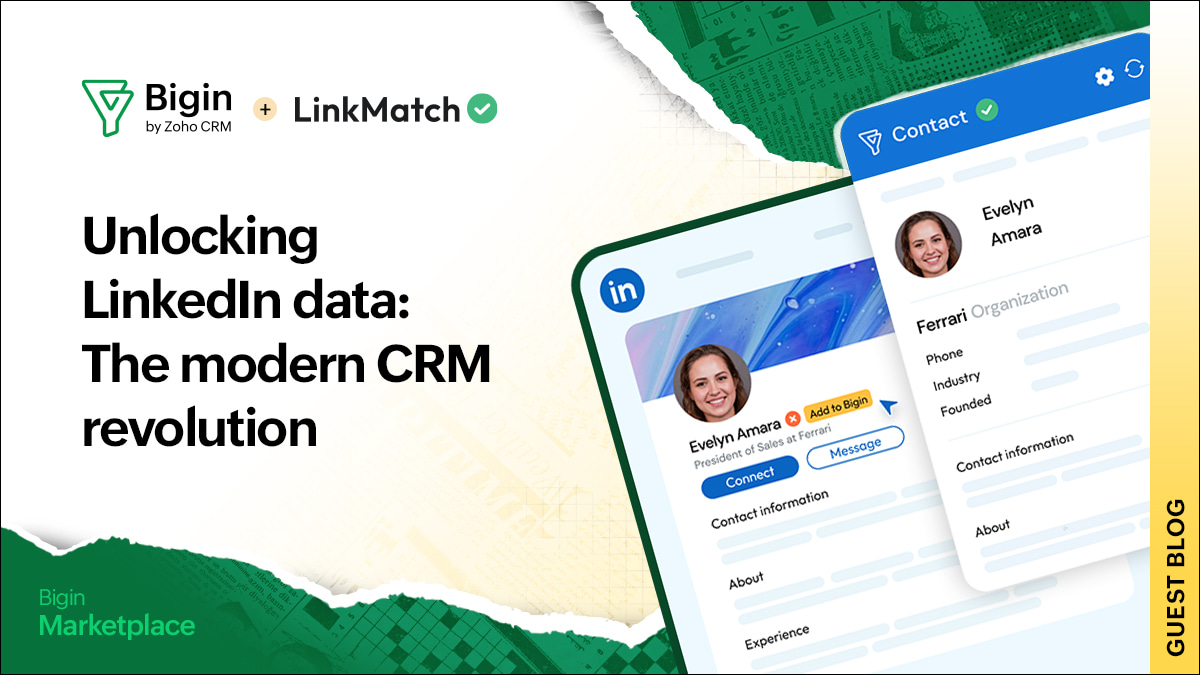Mastering sales pipeline management to improve deal flow
- Published : December 13, 2024
- Last Updated : December 16, 2024
- 471 Views
- 11 Min Read

Let's examine a scenario: Two sales teams, both skilled, both working equally hard. One team consistently crushes their quotas quarter after quarter, while the other barely scrapes by.
What's the first team's secret? It's not about having better products or more silver-tongued sales reps. The real difference maker is something far less flashy but infinitely more powerful: masterful sales pipeline management.
While most sales leaders know that pipeline management is important, many still use old methods that worked ten years ago. These methods don't meet today's needs.
But there's good news: Whether you're just starting out or are an established business looking to grow, effective pipeline management can transform your sales results. We'll show you how.
In this guide, we'll cut through the noise and focus on battle-tested strategies that actually move the needle. No theoretical fluff, no consultant-speak—just practical insights you can implement today to start seeing results tomorrow.
What is a sales pipeline?
A sales pipeline represents the systematic progression of potential deals through your defined sales stages. It maps out each critical step, from initial contact to final sale, providing a structured way to track and manage opportunities. This organized approach ensures that no potential deal falls through the cracks and helps sales teams maintain consistent progress.
At its core, a well-maintained pipeline offers complete visibility into the status of every sales opportunity. This clear overview enables your sales teams to prioritize their efforts effectively, identify which deals need immediate attention, and forecast future revenue with greater accuracy—so instead of relying on guesswork, you can make data-driven decisions about where to invest your time and resources.
The data backs this up. Companies that actively manage their sales pipelines see 28% higher revenue growth than those that don't (Harvard Business Review). That's not just a number—it represents real business growth and improved sales effectiveness.

(Stages of a typical sales pipeline)
But here's something most people miss: A sales pipeline isn't just about tracking deals; it's about understanding the rhythm of your sales process. When you know your rhythm, you can predict outcomes more accurately and spot problems before they derail your whole quarter.
Think of the sales pipeline as a framework for efficiency. Beyond providing clarity, it acts as a feedback loop. For instance, if you notice certain stages consistently dragging deals down, that's an opportunity to refine your process. Maybe the qualification criteria need tightening, or perhaps there's a gap in your follow-up cadence.
And here's a small yet powerful suggestion: Use visuals. CRM software tools often include pipeline charts that provide instant snapshots of your deal health. A quick glance can tell you where to double down and where to pivot resources.
Remember, the goal of a sales pipeline isn't just to track—it's to optimize. Every improvement you make compounds over time, leading to more conversions and, ultimately, more revenue.
Sales pipeline vs. sales funnel
Let's clear up a common misconception that trips up even seasoned sales professionals. While many use these terms interchangeably, they're actually quite different tools that serve distinct purposes.
A sales funnel shows how potential customers naturally progress through their buying journeys, from initial awareness to final purchase decision. It visualizes how your pool of prospects typically narrows at each stage and helps you understand conversion rates and drop-off points. But a pipeline is your team's active playbook. It maps out each concrete step your sales team takes to advance opportunities, from initial outreach to negotiation and closing. While a funnel shows you what buyers do, a pipeline tracks what your sales team does to move deals forward.
Which serves you better?
For small businesses, this distinction matters more than you might think. Here's why: When you're working with limited resources, you need to know exactly where to focus your efforts. A pipeline gives you that clarity; it shows you which deals need attention right now and what specific actions will move them forward.
Consider this real-world example: Imagine you're running a small software company. Would you rather know that 1,000 people visited your website (funnel approach), or that five qualified prospects need a follow-up demo this week (pipeline approach)? For most small businesses, the latter provides more actionable insights.
Breadth vs. depth
Let's add another layer to this distinction: A funnel shows you the breadth of your sales efforts, whereas a pipeline shows you its depth. Both are valuable, but for businesses juggling multiple deals, pipelines bring focus to execution.
Or here's another analogy: A funnel is like a map of a marathon course, while a pipeline is your coach guiding you along each mile. With the latter, you get actionable advice—when to sprint, where to conserve energy, and how to adjust your pace for the win.
In real-world terms, a business running on pipeline insights can pivot faster. If you notice a bottleneck in the demo stage, your pipeline can flag it immediately so you can course-correct without waiting for broader funnel trends to emerge.
Creating your sales pipeline stages
The foundation of successful sales lies in having a pipeline structure that mirrors reality, not theory. While every business has its unique sales rhythm, there's a proven framework that you can adapt to fit nearly any sales process. Remember, the key is to understand which stages genuinely reflect your customer's journey and your team's workflow.
Start with the basics: Every pipeline needs clear stages that map to how your customers actually buy. Using Bigin's proven pipeline template as a foundation, here's what that might look like:

(A product screenshot of a sales pipeline in Bigin)
First is your initial contact stage, where you separate serious prospects from those just browsing. During this crucial first interaction, you'll assess mutual interest and potential alignment between your solution and their needs. The goal is to quickly identify prospects who have genuine interest and purchasing potential.
Next comes the qualification stage, and here's where you dig deeper: Do they have the budget? Are they actually ready to buy? Can you solve their problem? Don't skip this stage—it's like checking the foundation before building a house.
But what most people miss is that between qualification and proposal, you need a discovery stage. This is where you uncover the real pain points that will drive the sale. Skip this, and you'll find yourself pushing solutions that don't quite fit.
To support this framework, consider adding micro-tasks within each stage. For example:
Initial contact: Automate reminders to send a personalized follow-up email within 24 hours.
Qualification: Include a checklist of questions to ensure reps consistently cover all critical points (e.g., decision-making authority, budget size, timeline).
Discovery: Add a step for documenting the prospect's pain points in your CRM. This becomes invaluable when tailoring proposals later.
Top tip: Regularly review your stages for alignment with your evolving sales process. Markets change, and so should your pipeline. What worked a year ago might now create unnecessary friction.
Managing your pipeline stages efficiently
Now comes the fun part—actually managing your pipeline. This is where many sales teams drop the ball. They set up their stages and then... nothing. The pipeline becomes a glorified spreadsheet that nobody updates.
Here's how to avoid that trap: Start by establishing clear criteria for moving deals between stages. Think of these as your pipeline's traffic lights—they keep deals flowing smoothly and prevent pile-ups.
But don't stop there. Schedule weekly pipeline reviews with your team. No, these aren't your typical meetings where everyone reads out their numbers. Instead, focus on two questions: "What's blocking our biggest deals?" and "Where do we need to take action today?"
Here's a pro tip that most people miss: Use your pipeline as a coaching tool. When you notice certain types of deals consistently stalling at specific stages, that's your cue to provide targeted training.
You could also consider integrating stage-specific KPIs. For example:
In the Qualification stage, track the number of discovery calls completed within the first week of contact.
In the Proposal stage, measure the average response time to customer inquiries.
Also, leverage AI tools for predictive insights. Some CRMs can analyze deal data and suggest which opportunities are most likely to close, enabling you to allocate resources more strategically.
Sales pipeline best practices
Success in sales comes down to how well you manage your deals from start to finish. While every company sells differently, some core practices have proven to work repeatedly, regardless of what you're selling or who you're selling to.
First up: data hygiene. Boring? Maybe. Essential? Absolutely. Regular maintenance of your pipeline data is crucial for success. Set aside time each week to update deal information, validate opportunity statuses, and remove or archive stalled deals. Clean, accurate data leads to better forecasting and more effective sales strategies.
Here's something counter-intuitive: Smaller pipelines often perform better than larger ones. Why? Because when you focus on fewer, higher-quality opportunities, you can give each one the attention it deserves.

(Sales pipeline best practices summarised)
A smaller, well-managed pipeline ensures every deal gets personalized attention. For instance, instead of chasing 50 lukewarm leads, focus on 10 that align with your ideal customer profile. This doesn't just improve conversions; it also boosts customer satisfaction because you're offering solutions tailored to their needs.
Beyond monitoring active deals, smart sales teams learn from their lost opportunities. Analyze why deals didn't close—was it price, timing, or competition? Use these insights to refine your strategy and re-engage those prospects when circumstances change.
Also, here's a creative tip: Conduct quarterly pipeline audits. Bring in someone outside your sales team—like a marketing colleague—to spot inefficiencies or offer fresh perspectives.
Essential pipeline metrics to track
Not all metrics are created equal; some directly influence your sales outcomes. Here are the ones that matter most, explained simply:
Pipeline velocity: Measures how quickly deals move through stages, helping you forecast sales accurately.

Conversion rates between stages: Tracks the percentage of deals advancing to the next stage, highlighting where leads drop off.

Average deal size: Indicates the typical revenue generated per deal to guide resource allocation.

Win rate by stage: Shows the likelihood of closing deals at each stage and helps refine your approach.

Average time in stage: Tracks how long deals stay in a stage so you can identify bottlenecks that need addressing.
 Average sales cycle: Shows how long it typically takes to close deals, with shorter cycles indicating greater efficiency.
Average sales cycle: Shows how long it typically takes to close deals, with shorter cycles indicating greater efficiency.

Churn rate: Tracks lost opportunities to uncover common reasons for deal failure, like pricing objections or timing issues.

Engagement levels: Measures how often prospects interact with your team or content, signaling how close deals are to closing.
But what separates great pipeline management from good is tracking leading indicators. These are the early warning signs that tell you if your pipeline is healthy or heading for trouble.
Pay special attention to activity metrics: new opportunities created, contact rates, and follow-up frequency. These numbers tell you if you're filling your pipeline fast enough to hit future targets.
On top of that, measure the pipeline-to-quota ratio—the total pipeline value compared to your sales targets. This metric helps gauge whether your pipeline is robust enough to meet your goals.
The key to mastering pipeline management isn't just tracking these metrics—it's using them to make better decisions. Start implementing these strategies today, and watch your sales process transform from a guessing game into a predictable engine for growth.
How to forecast sales from your pipeline reports
Now for the part your reporting manager really cares about: forecasting. But let's move beyond basic predictions and into accuracy that actually helps you make decisions.
Start with this simple truth: Your pipeline is like a weather forecast; it gets less accurate the further out you look. That's why smart teams use different probability weights for different stages. A qualified opportunity might be counted as 20%, while a deal in contract review might be 90%.
Here's a technique that could change your perspective on forecasting: Instead of focusing solely on close dates, track deal velocity. How quickly do opportunities typically move from stage to stage? This gives you a more realistic picture of when deals might actually close.
But don't stop there. Layer in historical conversion rates between stages. If you know that 30% of qualified opportunities typically close, you can make more accurate predictions about future revenue.
For better forecasting, leverage scenario planning. For example, what happens if your conversion rate increases by just 5%? Or if the average deal size drops by 10%? These insights help build confidence in your numbers and guide smarter resource allocation.
You should also consider integrating seasonality into your forecasts. If your business has peak and off-peak periods, adjusting pipeline expectations accordingly ensures targets remain realistic and achievable.
Lastly, build accountability into your forecasts. Tie pipeline health to team KPIs, like accuracy in close-date predictions or the ratio of weighted pipeline value to quotas.
Closing thoughts
Effective pipeline management isn't just about having the right tools or following a rigid set of rules. It's about creating a systematic approach that brings clarity, predictability, and momentum to your sales process. When you master your pipeline, you're not just tracking deals—you're orchestrating growth.
The key is to start small and build consistently. Begin by implementing just one or two of these strategies, perhaps focusing on regular pipeline reviews or improving your data hygiene. As these become habit, layer in more sophisticated approaches like velocity tracking and predictive analytics. Remember, the goal isn't perfection, but progress toward more predictable revenue.
Whether you're leading a growing sales team or managing deals solo, having the right foundation is crucial. That's where Bigin comes in—a pipeline-centric CRM built specifically for small businesses. It strips away the complexity of enterprise systems while maintaining the powerful pipeline management features you need to grow. With Bigin, you're not just managing a pipeline; you're building a scalable system for sales success. Start your free trial and see the difference!
More from the author
15 tips for small business success
Frequently asked questions about sales pipeline management
What is a sales pipeline?
A sales pipeline is a visual representation of the stage of your sales process that each prospect is in. It's essentially a systematic way to track and manage potential deals as they move through different stages of your sales cycle. A sales pipeline goes beyond just tracking—it's a strategic tool that helps sales teams prioritize their time and forecast revenue more accurately.
What's the real difference between a sales funnel and a sales pipeline?
While sales funnel vs. pipeline comparisons often cause confusion, the point to understand is that each serves a different purpose. A sales funnel tracks how potential customers move through their buying journey, focusing on conversion rates at each stage. In contrast, a sales pipeline tracks your team's active deals and the specific actions needed to move them forward. Think of the sales funnel vs. pipeline distinction this way: A funnel shows customer behavior, while a pipeline shows sales team actions.
How do I manage sales pipeline stages effectively?
To manage sales pipeline stages effectively, start by establishing clear criteria for moving deals between stages. Regular pipeline reviews, consistent data updates, and stage-specific actions are crucial. The key to managing pipeline stages is maintaining momentum. Each stage should have defined activities and timeframes to prevent deals from stagnating.
What are the essential sales pipeline metrics I should track?
Critical sales pipeline metrics include pipeline velocity, conversion rates between stages, average deal size, and win rates. For proper sales pipeline analysis, also track metrics like time-in-stage, total pipeline value, and activity levels per opportunity. These measurements help identify bottlenecks and forecast future performance more accurately.
What are some proven pipeline management best practices?
Key pipeline management best practices include:
Regular data cleanup and validation
Weekly pipeline reviews focused on action items
Clear entry and exit criteria for each stage
Consistent follow-up protocols
Regular analysis of won and lost deals
Strategic resource allocation based on deal value and probability
How can I improve my sales pipeline analysis?
Enhance your sales pipeline analysis by doing the following:
Tracking leading indicators of pipeline health
Analyzing conversion rates between stages
Identifying common sticking points in your process
Measuring the impact of sales activities on deal progression
Reviewing historical data to identify successful patterns
Using predictive analytics to forecast outcomes
Remember, effective pipeline management isn't about perfection; it's about continuous improvement and maintaining a systematic approach to sales. Whether you're leading a team or working solo, these insights can help you build a more predictable and profitable sales operation.
 Anubhav
AnubhavAnubhav is a product marketer with an insatiable thirst for all things content marketing, technology, and SaaS. His expertise lies in crafting compelling narratives that resonate with audiences and drive business growth. With a deep-rooted interest in entrepreneurship, Anubhav closely follows the latest industry trends and innovations, constantly seeking new ways to elevate marketing strategies.


